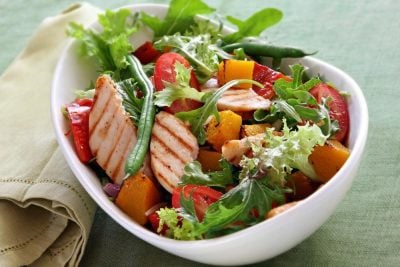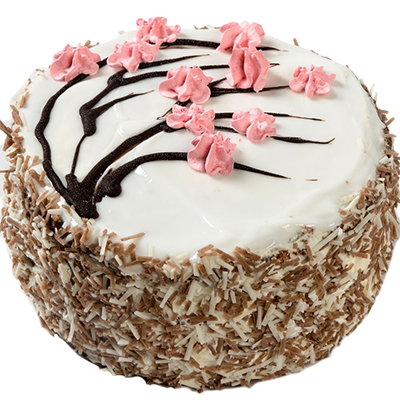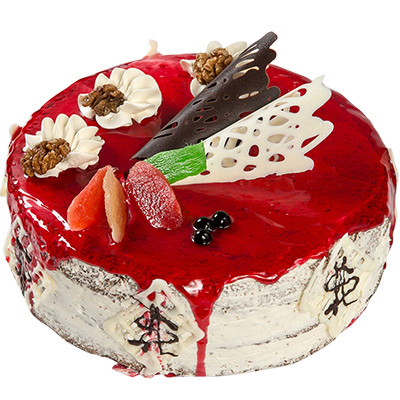Something went wrong in the kitchen? Most of the time you can still save your food. We give you tips on typical problems.
You weren’t paying attention for a moment, the salt slipped or the recipe didn’t work. This can happen, but don’t worry: you can usually save your food. Before throwing it away, avoid wasting food and try one of our tips.
Save oversalted food

Almost everyone has probably oversalted a meal at some point. This can often be prevented by adding small amounts of salt step by step and tasting in between. However, this is not easy with some dishes such as casseroles and it can also happen that you add too much salt all at once.
How to save oversalted food:
If you’ve just slipped the salt, you may still be able to skim it off the surface of the food.
Cut a raw potato into large pieces and cook them for a few minutes. It absorbs some of the salt. Then remove them from the pot. The same works with carrots, bread or prunes. Cook the latter for about 15 minutes.
Sweeten your dish slightly, for example with honey or maple syrup. If it tastes too sweet afterwards, you can counteract it with a little acid (e.g. lemon).
Serve unsalted side dishes with the dish, such as lettuce leaves or yogurt.
The following tips also work for foods that are too sweet, spicy or sour:
Mix soup, sauce or your stew with water, wine, milk, cream or a vegan cream or plant-based milk. You can then thicken the liquid – there are tips for this below.
Prepare the dish again unsalted (or without spiciness, sugar or acid, as required) and mix both variants together.
Too spicy food? you can do that
Sharpness is not always easy to dose. Some chili peppers are very hot, others hardly at all. In addition, everyone perceives sharpness differently.
How to save overly spicy food:
Capsaicin, which makes the chili hot, is fat-soluble. You can often save overly spicy food by skimming off the fat on the surface.
Again, add a tablespoon or two of honey or maple syrup to the food. You can then compensate for too much sweetness with acid.
Serve the dish with bread and/or yoghurt or quark or provide milk. These foods help mitigate spiciness.
You can also save food that is too spicy by cooking raw potato pieces in it for a few minutes.
Save too sweet food
Sweetness is also a matter of taste – in both savory and sweet dishes. For both variants, you have different options for saving food that is too sweet:
A pinch of salt can help tone down the sweetness of savory foods.
You can season both savory and sweet foods with acid to balance out the sweetness. Lemon juice or vinegar, for example, help with savory dishes (note: some vinegars contain sugar). You can also round off some sweet dishes with lemon juice. For others, it is a good idea to add sour fruit to compensate – for example a berry sauce or rhubarb compote.
As with other taste flaws, you can sometimes salvage food that’s too sweet by stretching it. This works especially well with rather liquid foods. Stretch them with water or a dry wine, for example, and taste them again.
What to do when your food burns
Charred or burnt food is annoying for two reasons: The black spots don’t taste good and contain harmful substances like acrylamide. So you better always keep an eye on your food. Still, you can salvage burnt or charred food.
If something burns in the pot, you may still be able to salvage your food. Be sure not to stir so the burnt doesn’t mix with the rest. Instead, carefully skim off the unharmed portion of the food and place it in a new pot. You can continue cooking the food in it. It may still taste slightly roasted – either that goes well or you can try to cover the roasted flavor with spices.
A few spots have become too dark when roasting or baking? It is best to cut them off generously. Unfortunately, it doesn’t look so nice, especially with a cake. However, you can cover up the broken spots by covering the cake with icing, vegan frosting or whipped cream, for example.
Save food that is too liquid

Soups and sauces don’t always have the desired consistency – they often just don’t want to be creamy. However, food that is too liquid can be saved easily:
If you still have time, you can let the soup or sauce simmer uncovered. This is useful if you are not that far from the desired result. If so, this method is very time-consuming and energy-consuming.
Mix about a tablespoon of flour or starch with a little water, wine, or milk. Stir the mixture into the food and cook again until thick.
(Vegan) cream or crème fraîche (substitute) can also make dishes that are too liquid creamier.
Grate a raw potato and stir it into the food. Cook them until the shavings dissolve and combine with the rest of the sauce.
Stir cold (vegan) butter into the food in chunks.
Overcooked food? You can save even that
Some people don’t mind if the vegetables are soft and the noodles have a wobbly texture. For others, overcooked food is inedible. Unfortunately, the cooking process cannot be reversed – you can still save the food:
Prevent worse by immediately removing the food from the stove. You can also rinse noodles or vegetables under cold water to interrupt the cooking process.
Garnish the food with a crunchy topping. You have many options for this – for example (roasted) nuts or seeds, homemade croutons or crispy fried tofu.
You can prepare a delicious mash, puree or vegetable soup from overcooked vegetables and potatoes.
Sear overcooked foods or gratinate them in the oven until they get a crispy surface. This works particularly well with starchy foods such as pasta or potatoes.
Cake base is broken

Cakes are often served on festive occasions, which makes it all the more important that they turn out well. A broken cake base is therefore very annoying. It can break for a variety of reasons:
You took the dough out of the mold too soon. It should always cool down first.
The pan wasn’t greased well and the dough stuck in one spot. You can prevent this by very carefully removing the dough from the mold and, if necessary, using a knife or something similar.
You tried to cut through the cake base.
Even if it is broken, you can of course still eat the cake base. How to save him:
The easiest thing to save is a cake with multiple bases, only one of which is broken. Simply use this as a middle or top pie crust by piecing it back together. In the latter case, you can cover the mishap with a layer of whipped cream or fruit, for example.
If you only have the one cake base, you can also puzzle it back together. When cutting, some pieces may be a bit crumbly later. However, a creamy filling or a layer of fruit with icing will hold the cake together.
For example, if the cake base is very crumbled, you can layer the crumbs in muffin cups, alternating with the filling. With some fruit, for example, they become delicious apple muffins. Or you turn the broken cake base into a mole cake.
